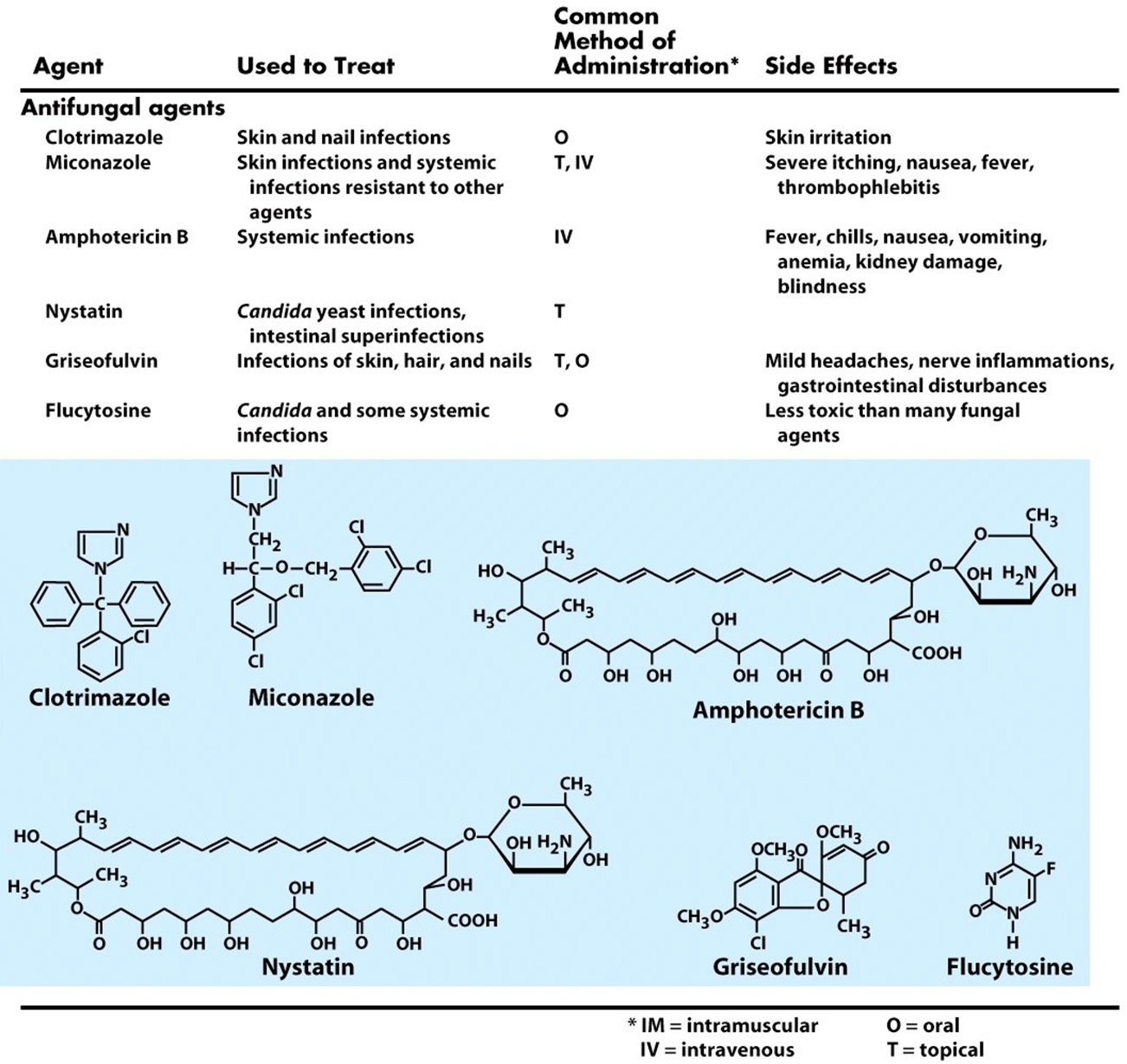|
Fungi
A fungus (singular) is a member of a large group of eukaryotic organisms that includes microorganisms such as yeasts and molds, as well as the more familiar mushrooms (Figure 1). Fungi are classified as a kingdom that is separate from plants, animals, and bacteria. One major difference is that fungal cells have cell walls that contain chitin, unlike the cell walls of plants, which contain cellulose. These and other differences show that the fungi form a single group of related organisms that share a common ancestor. The discipline of biology devoted to the study of fungi is known as mycology, which is often regarded as a branch of botany, even though genetic studies have shown that fungi are more closely related to animals than to plants. Pathogenic fungi are fungi that cause disease in humans or other organisms. The study of pathogenic fungi is referred to as medical mycology. Although fungi are eukaryotic organisms, many pathogenic fungi are also microorganisms. Figure 1. A budding yeast: the Circular bud scars seen on the surface of the cell on the right represent sites of previous budding. Serious fungal infections are generally encountered in immunocompromised hosts (people with AIDS or cancer). This may also include healthy individuals who are taking a multitude of drugs to treat a particular infection, for instance, those with stomach ulcers taking a cocktail of antibiotics. Nevertheless, fungi are still able to cause disease in otherwise healthy individuals. The type of disease caused by fungal infections is usually dependent on fungal tropism for target organs or tissues, leading to their preferential colonization. For example, lethal bloodstream infections can occur when pathogenic fungi gain access to the circulatory system and are able to successfully grow there, whereas growth in the meninges of the brain can lead to life-threatening meningitis. Non-life-threatening fungal infections, such as athlete's foot, ringworm (which is not caused by a worm at all), and similar skin infections occur commonly, as do diseases affecting other tissues, such as vaginitis and oral thrush. Diseases caused by fungi can be classified into three clinical groups, namely, superficial, subcutaneous, and systemic mycoses. The superficial mycoses are the most common and include infections of the skin, hair, and nails. These dermatophyte (any fungus parasitic on the skin and causing a skin disease, as ringworm) infections are chronic, with a relatively mild localized inflammatory response. Also included in this group are infections of the mucosal surfaces with Candida albicans. Although C. albicans is normally present in the mouth, vagina, and intestinal tract, its overgrowth can occur in individuals who are immunosuppressed or undergoing antibiotic therapy. Subcutaneous mycoses are generally caused by puncture wounds and are characterized by localized abscesses. The most serious fungal infections are the systemic mycoses, including histoplasmosis, cryptococcosis, and coccidioidomycosis, which usually begin as lung infections and are acquired by inhaling the spores of free-living fungi. Fungi produce both glycoprotein and polysaccharide antigens, which have been used in the evaluation of parameters defining both the level of infection caused by a certain fungus and the quality of immunity induced by it. In addition, protein and glycoprotein antigens are also used to diagnose fungal infections and may be involved in the pathogenic process employed by these microbes. Polysaccharides such as the glucuronoxylomannan capsular polysaccharide produced by Cryptococcus neoformans are important in the infectious process used by this fungus; antibodies to this antigen has shown protective effects. C. albicans produces mannose polymers (mannan), and Aspergillus fumigatus produces a galactomannan (mannan substituted with additional galactose groups), both of which are used in antigen-detecting assays, thus acting as useful diagnostic markers. An antifungal drug is a medication used to treat fungal infections such as athlete's foot, ringworm, candidiasis, serious systemic infections such as cryptococcal meningitis, and others. Such drugs are usually obtained by a doctor's prescription or purchased over-the-counter. These drugs work by exploiting differences between mammalian and fungal cells to kill the fungal organism without dangerous effects on the host. Unlike bacteria, both fungi and humans are eukaryotes. Thus, fungal and human cells are similar at the molecular level. This makes it more difficult to find or design drugs that target fungi without affecting human cells. As a consequence, many antifungal drugs cause side-effects. Some of these side-effects can be life-threatening if the drugs are not used properly (Figure 2). Figure 2. Antifungal agents. Click to enlarge.
The following is a list of fungi that have been profiled: |
click the animation to read more about the featured organism
|


